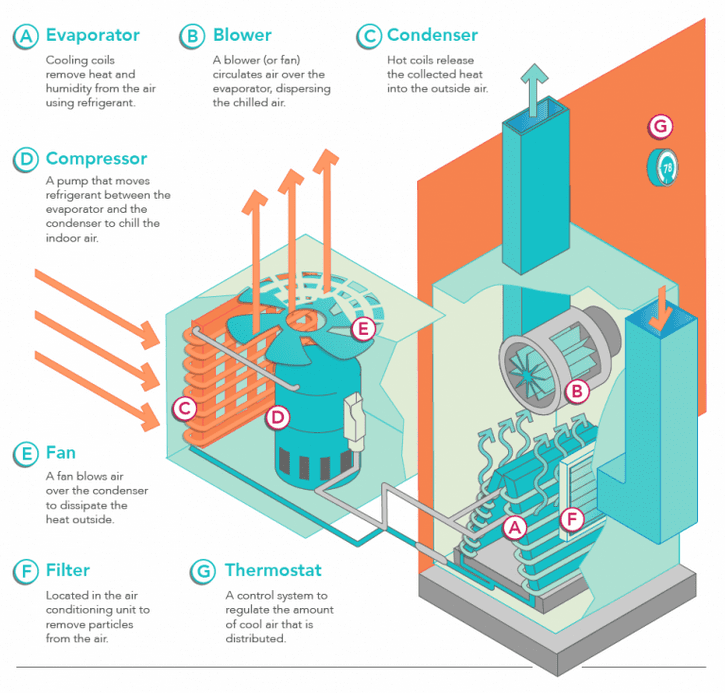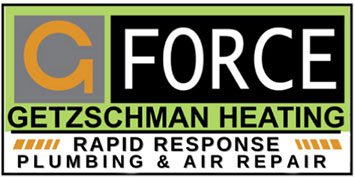Getzschman’s Air Conditioning Guide for Dummies

You don’t need to be a certified technician to understand how an air conditioner works. Knowing a little bit about the system that works so hard to keep you comfortable all summer can actually be a huge perk that can help you when you’re in a pinch. Let’s face it, air conditioners like to break down at what always seems like the most inconvenient time. Understanding how your system works can help you assess what your problem might be, as well as help you avoid future issues. So, here’s Getzschman’s Air Conditioning Guide for Dummies.
Step-By-Step through Your AC System
You air conditioner works in a comparable way to a refrigerator. It transfers heat from the inside of your home to the outside. This informational diagram by Energy.gov gives a simpler look at its components and how they interact to keep you more comfortable. The main component that makes this all possible is refrigerant. This liquid is unique because it is able to change from a liquid to a gas quickly at low temperatures as it is pumped through your system. This is important because when a liquid becomes a gas it absorbs heat, and when a gas is compressed into a liquid it releases heat.
Let’s start in the evaporator part of your unit inside your home. Here your blower circulates air from your home. That air is pushed across cooled coils filled with cold liquid refrigerant. As the warm air inside your evaporator passes across the cooled coils, it is cooled as the refrigerant inside the coils removes the heat and humidity by absorbing it from the air. This newly cooled air is then blown back into your home.
As the refrigerant continues to move through the evaporator coils, it has now warmed up and evaporated into a gas. The gas refrigerant then moves into the outside part of your unit in the compressor. Here it is compressed into a high pressure hot gas. The gas then travels through the condenser coils, where your condenser fan blows air over the condenser coils, removing heat from the gas refrigerant. As that heat is removed from the refrigerant, it is condensed back into a cool liquid state and the process starts all over again. This process continues again and again until your home reaches the cooling temperature you want, as programmed and sensed by your thermostat setting.
Related Read: Common Air Conditioning Problems & Why They’re Happening
How to Use This Newfound Knowledge
If there’s one thing that you take away from this guide, it should be that refrigerant is VERY important. If there is a leak in your condenser or evaporator coils it could spell disaster for your system. Low refrigerant levels are likely a signal that your system has a leak. And refilling refrigerant is just a temporary fix. Refrigerant levels should remain constant in your system for it to work efficiently and effectively.
Another big takeaway is knowing to keep all of your coils clean and free of debris so that they can effectively cool the air being pushed into your home.
And make sure you keep your vents and outside AC unit clear of any obstructions.
Lastly, make sure your thermostat has working batteries and has an accurate reading. It is what measures the temperature in your home and signals to your AC system how hard it should be working.
The best way to keep your system healthy is to call in the professionals at Getzschman Heating & Cooling for regular maintenance on your Omaha home’s air conditioner. We have a thorough checklist that covers all the major components of your system. It will leave your air conditioner refreshed and ready to go. Call us at (402) 554-1110 for all your air conditioning needs.
